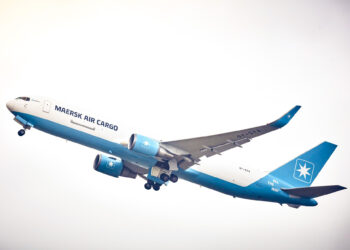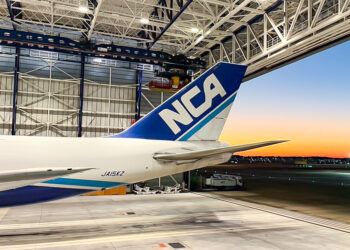No products in the cart.
747-8 – the state of the program

At the end of last week, Cargolux took delivery of a 747-8 Freighter.
As we said in Friday’s post on that delivery, the Luxembourg-based carrier had already taken delivery of thirteen of the type, and this one, #14, is the last it will take. Several other carriers have also taken all the 747-8s they ordered, which raises the question: What next for the 747-8?
 Boeing has booked orders for seventy-four 747-8 freighters and fifty of the 747-8I passenger variant – a total of 124 aircraft. Of these, it has delivered sixty-seven freighters and forty-one pax units, leaving a nominal backlog of sixteen. At its current production rate of six 747-8s per year, this would be enough to keep the production line running for two years and eight months. That is, through mid-2019.
Boeing has booked orders for seventy-four 747-8 freighters and fifty of the 747-8I passenger variant – a total of 124 aircraft. Of these, it has delivered sixty-seven freighters and forty-one pax units, leaving a nominal backlog of sixteen. At its current production rate of six 747-8s per year, this would be enough to keep the production line running for two years and eight months. That is, through mid-2019.
But the nominal backlog does not bear much relation to reality. Start with the passenger variant. As shown in the chart, all of the 747-8Is ordered by Air China, Lufthansa, and the various VIP customers have been delivered. What remains are three of the ten ordered by Korean Air, plus four for Transaero and two for Arik Air. But Russia-based Transaero ceased operation last year, and Nigeria’s Arik Air had to suspend operations for two weeks this month when its insurer ran out of cash. It has now resumed operation, but Nigeria’s economy is in the toilet, and it is unclear whether Arik will be able to take the two 747-8Is. Further, one of the three remaining on order for Korean Air has already been built and is awaiting delivery.
So put the passenger 747-8 backlog at two.
Turning to the freighter variant, we start by noting that four of the freighters in the backlog (one each for AirBridge/Volga-Dnepr, Korean Air, and Silk Way West, and one as yet unidentified) have already been built and are awaiting delivery.
This would appear to reduce the freighter backlog to just three.
But, on the other side of the coin, Boeing shows a total of only twelve orders from AirBridge/Volga-Dnepr, while the true total is almost certainly higher. How much higher is yet to be determined, but earlier this year Volga-Dnepr group confirmed its 2015 MoU for up to twenty 747-8Fs. Some of these are included in Boeing’s published firm-order totals, but Volga-Dnepr could take as many as twelve more.
Then there is the US Air Force, which is widely reported to have ordered two specially-configured 747-8s to replace its existing Air Force One and Air Force Two, used for transporting the US President.
So Boeing’s real 747-8 backlog is somewhere between five and twenty, depending on how many of the twenty freighters Volga-Dnepr Group takes, and whether the Air Force does indeed take two. At the current production rate, this is between one and three years.
And then?
Beyond the currently known backlog, there is also the possibility of an order from Iran Air. Details are still somewhat unclear, but it is believed the Iranian order includes four 747-8Is. And if air freight demand grows strongly over the next year, then more freighter orders are a possibility.




